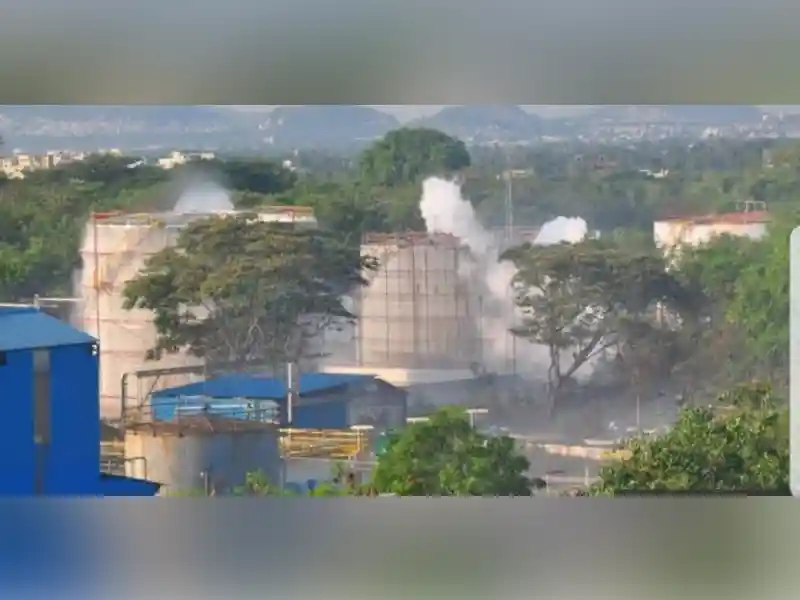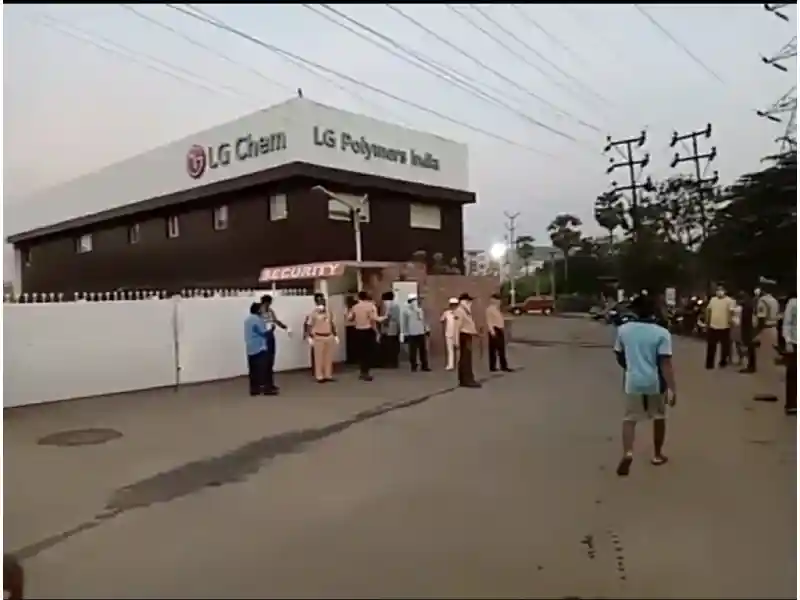What is Styrene, the chemical compound that led to Vizag gas leak?
By Newsmeter Network Published on 7 May 2020 4:04 AM GMT
Vijayawada: Andhra Pradesh Officials have reported that Styrene is the chemical that leaked from the LG Polymers plant in Vizag on Thursday morning.
Speaking to media, RK Meena, Commissioner of Police, Vizag said that it was styrene that leaked from the plant. The incident which occurred in the wee hours of May 7, has killed at least five people, while around 1,000 have fallen sick in the three villages.
Dr. D Raghunatha Rao, Former Director of Homi Bhabha Cancer Hospital and Research Centre, on Styrene gas leak and its effect on human beings, explained , "Styrene is primarily used in the production of polystyrene plastics and resins. Acute (short-term) exposure to styrene in humans results in mucous membrane and eye irritation, and gastrointestinal effects. Chronic (long-term) exposure to styrene in humans results in effects on the central nervous system (CNS), such as headache, fatigue, weakness, and depression, CSN dysfunction, hearing loss, and peripheral neuropathy'.
He further adds, Human studies are inconclusive on the reproductive and developmental effects of styrene; several studies did not report an increase in developmental effects in women who worked in the plastics industry, while an increased frequency of spontaneous abortions and decreased frequency of births were reported in another study. Several epidemiologic studies suggest there may be an association between styrene exposure and an increased risk of leukemia and lymphoma. However, the evidence is inconclusive due to confounding factors".

What is Styrene?
Styrene, chemically known as ethylbenzene, is a synthetic chemical that evaporates easily, and has the texture of a colourless liquid. This chemical is commonly used in the manufacture of plastic products using in food packaging, rubber, plastic, insulation, fiberglass, pipes and automobile parts.
Among the top 50 chemicals worldwide, styrene was twentieth in 1994 with production of 11,270 million pounds, according to the World Health Organisation (WHO).
Also called PVC gas, polystyrene is found in different forms, Styrene or Polystyrene Plastic, Polystyrene Foam (often referred to as Styrofoam), and Polystyrene Film.
How lethal is styrene?
Out of these, styrene monomer is considered to be the toxic substance. As listed in the CDC- ATDSR toxic substances portal, the styrene monomer, if subject to polymerisation in a closed container, can lead to rupture and leakage. The harmful effects of this styrene monomer include severe irritation to eyes and mucuous membranes, as well as gastro-intestinal effects.
Chronic exposure to styrene leads to effects on the central nervous system (CNS), such as headache, fatigue, weakness, and depression, CSN dysfunction, hearing loss, and peripheral neuropathy.
A research publication by the EPA (Environmental protection Agency) published in 2016 stated that “Several epidemiologic studies suggest there may be an association between styrene exposure and increased risk of leukemia and lymphoma.” Some other studies also suggested spontaneous abortions and decreased frequency of births due to styrene exposure. However, these studies have been found to be inconclusive.
�
